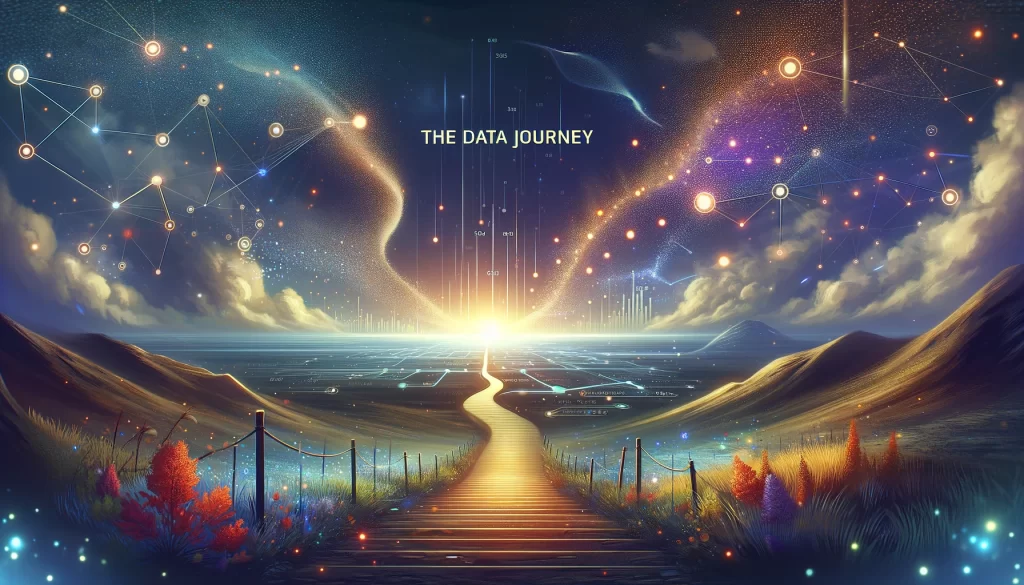Embracing AI: A Check-in
Excited about diving into the world of Artificial Intelligence with your latest project? You’ve got the budget, the team, and a vision of streamlining operations like never before. But, as you venture deeper, the results aren’t quite what you pictured. Instead of the smart, seamless AI you dreamed of, you’re met with outcomes that are, frankly, a bit disappointing. As you explore why this might be the case your search might lead you to a well-known piece of wisdom in the tech world: “garbage in, garbage out.”
It’s a bit of a wake-up call, realizing that the seamless integration of AI into our workflows requires more than just plugging in models and watching the magic happen. If this sounds familiar, you’re not alone. We often hope for a quick solution that will unlock multiple X in benefits, but the reality is that AI implementation demands thoughtful preparation and management of your data in order to be successful.
The Data Journey: Data Integrity Drives AI Success

Data has a lifecycle, like everything else. If data is mis-managed it can drop in quality and have a very noticeable impact on downstream efforts. Low integrity leads to low quality results, no matter how advanced the model is.
From creation to deletion, having solid management practices around your data can have enormous benefits. It can also lead to greater trust in the results that data analytics, data science and AI derive from them. So what should you look out for? Here’s a brief summary of how to assess if your organization is treating data with the right attention so that it can deliver true value.
The Starting Line: Capturing Data
Capturing the right data is crucial. It’s not just about collecting information; it’s about ensuring that you’re gathering data that is relevant and valuable. Aim for data points that can be autonomously collected through instrumentation. Often the lowest quality and inconsistent data is manually created.
The Middle Ground: Ingesting Data
Efficient data ingestion is the backbone of smooth operations. It’s about bringing data into your systems in a way that’s not just consistent but makes sense for your needs. You goal here is consistency in how data is surfaced. With that in place you can begin to introduce cost and operations saving changes like Warehouse optimisation & observability.
The Craft: Curating Data
Data that comes straight from source systems isn’t valuable on it’s own. Quite often we are required to bring data from multiple systems together in a way that answers a larger business question.
The goal here is to curate common, maintained and trusted datasets that hide the complexities of underlying systems. Think of this as the integration point for all your data, where careful thought and attention is applied to bring disparate systems data together in a defined and repeatable way.
The Cleanup: Deprecating and Deleting Data
Recognizing when data has served its purpose and knowing when to let it go is essential. Identifying and safely deprecating data which is out of date, no longer relevant or simply bad is a valuable effort to go through. It can lead to less confusion around which data to use and also avoid the wrong data being integrated into a business process or modeling effort. This step is about keeping your data landscape clean and relevant.
After deprecating comes deletion. These terms are often discussed together but have different considerations. For example, a company that must adhere to financial regulations may not have the luxury of deleting old data to save on costs.
Elevating Your Data Management Game: Tools You’ll Love

Deciding to boost your data management practices is a brilliant move. It’s like deciding to organize your digital life – it takes effort but pays off big time. To get there, you’ll need a toolkit that’s up to the task. Here’s a breakdown of some key tools I’ve found super helpful. Remember, the tech world is always on the move, so it’s smart to keep exploring and find the perfect fit for your unique needs.
Data Replication Services: Your Data Movers
First things first, you’ve got to move your data from where it is to where it needs to be, without losing a bit of its essence. Think of data replication services as your data moving company, ensuring your precious data makes it safely into the data warehouse. Providers like Fivetran, Stitch, and Integrate.io are like the reliable movers you’d recommend to a friend; they get the job done with efficiency and care.
Data Warehousing Solutions: Your Data’s New Home
Choosing where your data will live is a big decision. It’s about finding a space that’s not just big enough but also the right environment for your data to thrive. Whether you’re a small startup or a large enterprise, there’s a solution out there for you. Options like Google BigQuery, AWS Red Shift, Azure Synapse, Snowflake, and Databricks offer a range of habitats tailored to different sizes and types of data families.
Data Transformation Frameworks: Giving Your Data a Makeover
If you thought managing data was all about storing it and occasionally running some SQL queries, think again. For those who really want to dive deep and curate their data, transformation frameworks are your best bet. Tools like Data Build Tool (dbt) help you organize and refine your data, making it not just presentable but truly valuable.
Data Observability Platforms: Keeping an Eye Out
Ever wondered how you’d know if something in your data pipeline broke? You don’t want to wait until your sales dashboard looks like a ghost town. That’s where data observability platforms come into play. They’re your lookout, alerting you the moment something seems off so you can fix it before it becomes a problem. Monte Carlo is a standout in this area, offering a suite of tools designed to shift your team from reacting to issues to preventing them.
Conclusion: Data as the Backbone of AI
The journey towards leveraging AI effectively is intertwined with how we manage our data. It’s about recognizing that our data needs as much attention and care as any other aspect of our operations. By viewing data management not just as a routine task but as a critical component of our AI strategy, we can unlock the full potential of these technologies. This balanced approach ensures that we can harness the power of AI in a way that is both impactful and sustainable. Let’s not forget, in the world of AI, your data isn’t just an asset; it’s the foundation of everything you’re building.
